ECOLOGICAL INTERACTION
OBSERVING ECOSYSTEMS AS INDICATORS FOR DESIGN
Hypothesis
The current poor soil condition of the chosen habitat, which is located at a junction between collserola and parc de laberint, can be analyzed and observed, as the soil differs significantly in all three biomes. Soil change can be accomplished by planting our witness species (Celtis australis), which is found in all three areas. Our photonic capacitive sensor measurements and drone chromatic imagery will demonstrate a positive transition through the biotic functions of the Celtis Australis through the variables of chromatography and capacitive sensing. By strategic planting constant tracking and monitoring, we will improve the ecology of the site .
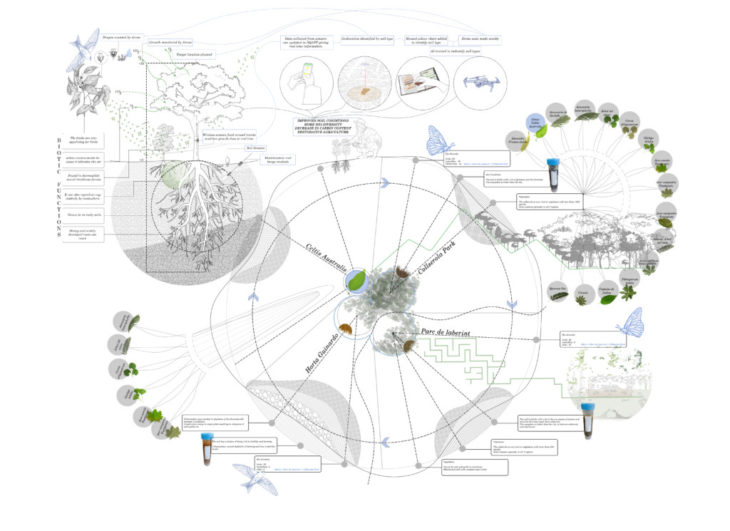 Methodology
Methodology
We chose Celtis Australis as our witness species because of its various abilities and characteristics that could improve the site’s soil condition. Capacitor sensor and drone chromatic imagery technology and soil quality application are chosen to observe, monitor, and analyze our process in the following way.
Winogradsky Column – Microbial Ecology, Munsel color chart, SQAPP- soil quality app, Drone imagery, Onsite observation.
This system can then be used by designers to propose a program of Applied Ecology:
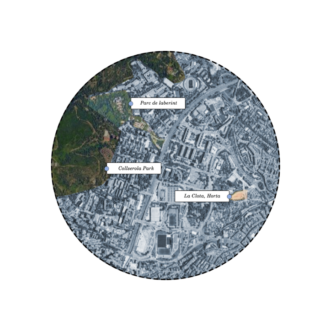
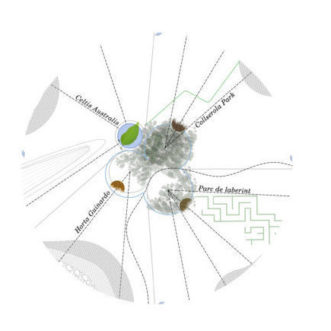
We researched and examined the current statuses of all three areas and discovered a significant difference in terms of soil and bio diversity at Horta, which is located between Collserola and Parc de Laberint.
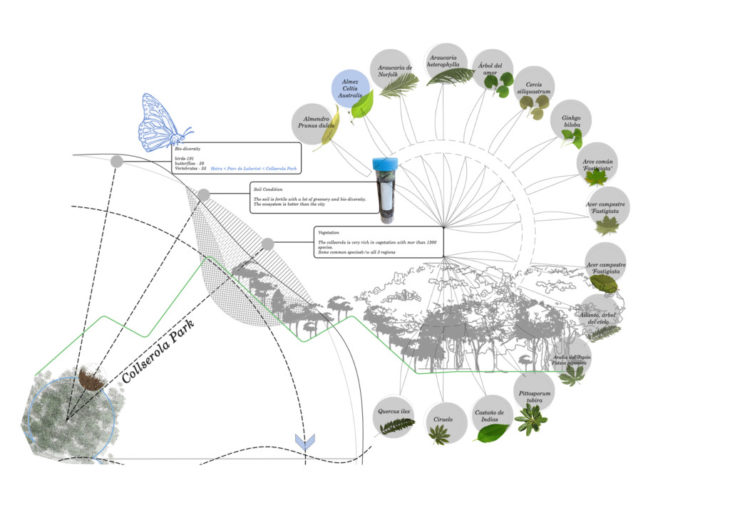 Collserola’s ecosystem is superior to that of the city because it has more vegetation and bio diversity than laberint and horta. As shown in the diagram, the soil we sampled was very rich and fertile, as well as dark in color. There are over 500 species of vegetation, and when we researched most of them, we discovered one species that was common to all three biomes, Celtis australis.
Collserola’s ecosystem is superior to that of the city because it has more vegetation and bio diversity than laberint and horta. As shown in the diagram, the soil we sampled was very rich and fertile, as well as dark in color. There are over 500 species of vegetation, and when we researched most of them, we discovered one species that was common to all three biomes, Celtis australis.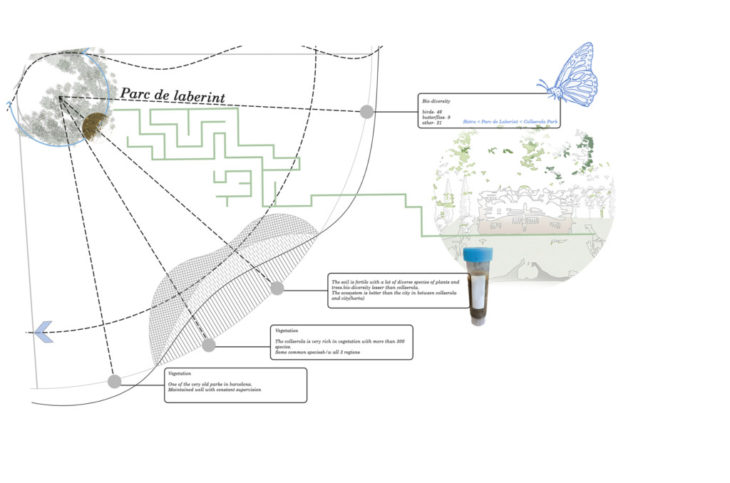 The ecosystem in the park is fairly well maintained, and it is one of Barcelona’s oldest parks, in better condition than Horta. The soil that we sampled was very fertile, allowing various species of plants and trees to grow, and it was brown (a little darker than the previous one), as shown in diagram. There are many species of birds and butterflies in the Collserola region, but they are less diverse. Our witness species, Celtis australis, was also discovered here.
The ecosystem in the park is fairly well maintained, and it is one of Barcelona’s oldest parks, in better condition than Horta. The soil that we sampled was very fertile, allowing various species of plants and trees to grow, and it was brown (a little darker than the previous one), as shown in diagram. There are many species of birds and butterflies in the Collserola region, but they are less diverse. Our witness species, Celtis australis, was also discovered here.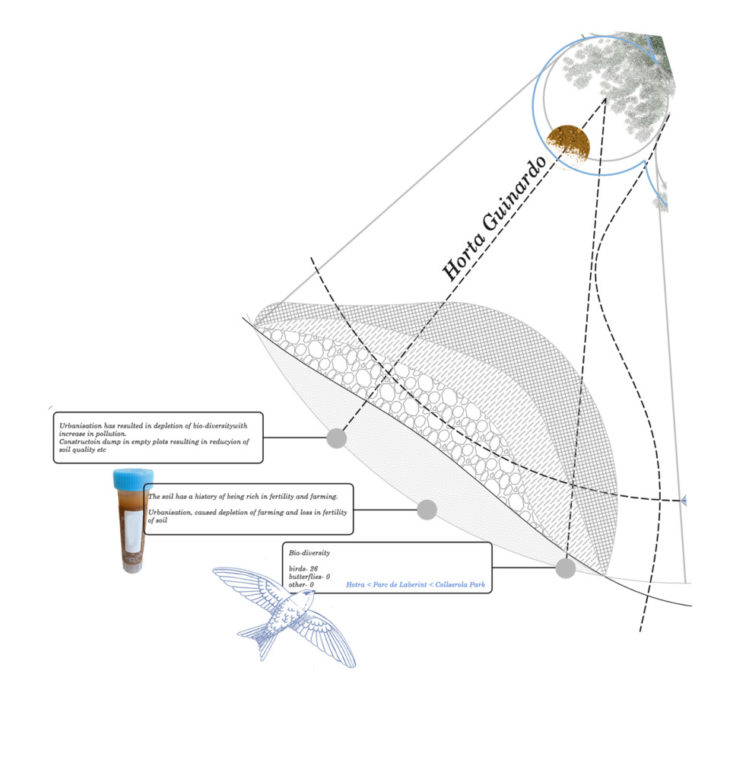 The horta ecosystem is the weakest and is hampered by urbanization, which has resulted in the removal of existing farms, as well as the construction dump being placed in empty plots, resulting in a decrease in bio diversity and many other problems such as poor soil conditions, increased carbon content in the atmosphere, soil erosion, and very little vegetation. The soil that we sampled was very weak, and the first layer was sandy and rocky, allowing many plants to thrive despite the lack of nutrients. This was also evident in the color of the soil sample. In terms of bio diversity, there are fewer bird and butterfly species here than in the Collserola region and Laberint. celtis australis, our witness species, was also discovered here.
The horta ecosystem is the weakest and is hampered by urbanization, which has resulted in the removal of existing farms, as well as the construction dump being placed in empty plots, resulting in a decrease in bio diversity and many other problems such as poor soil conditions, increased carbon content in the atmosphere, soil erosion, and very little vegetation. The soil that we sampled was very weak, and the first layer was sandy and rocky, allowing many plants to thrive despite the lack of nutrients. This was also evident in the color of the soil sample. In terms of bio diversity, there are fewer bird and butterfly species here than in the Collserola region and Laberint. celtis australis, our witness species, was also discovered here.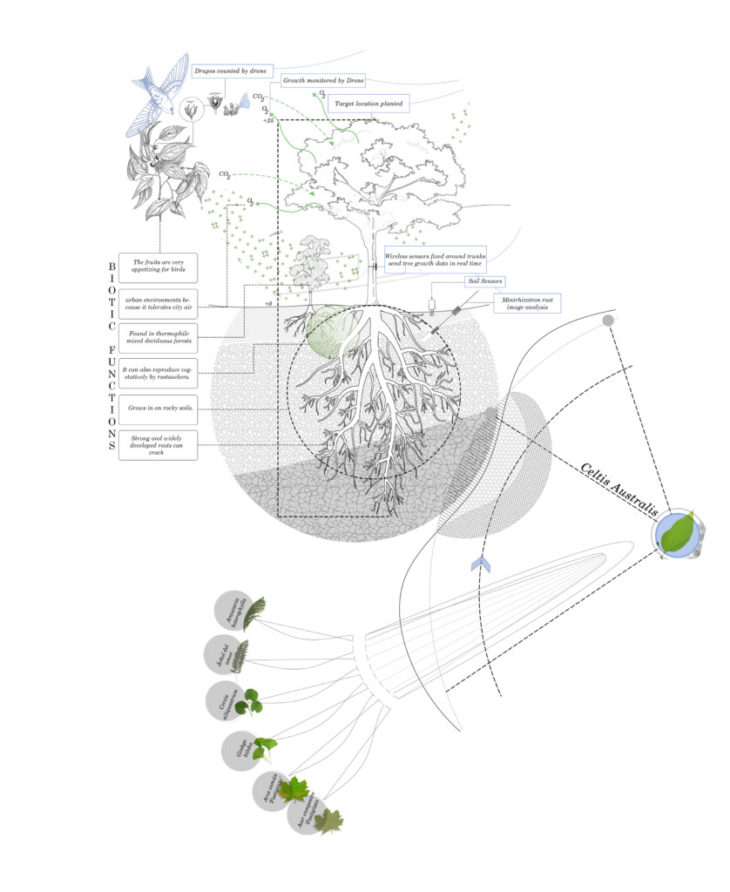 Biotic Function of Celtis Australis
Biotic Function of Celtis Australis
Celtis australis was chosen primarily for its biotic functions.
This tree can grow in any type of soil, including rocky, sandy, and fertile soil.
The fruits of the trees are tasty to birds.
It can reproduce vegetatively by sucking on roots.
The tree can be planted alongside a variety of other companion species that complement each other.
They have a higher carbon content absorption.
They also help to prevent soil erosion, which allows the strong roots to go deeper into the ground and loosen the soil, causing the soil to change and become more fertile.
It can reach a height of 25m in general and 15m in Mediterranean regions, and it provides a lot of shade.
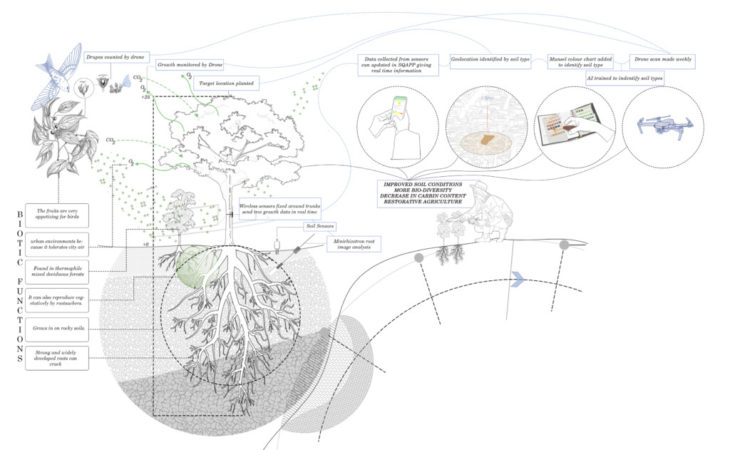
To improve the soil conditions in these areas, we detect weak soil areas using drone chromatic imagery which is trained to identify soil type using Munsel colour chart. Than we plant them in specific locations in order to repopulate them with companion species. We install ground sensors to detect root strength and depth. After reaching a height of 15-25m, they bear drupes, which are detected and counted, as well as growth monitored by drones.
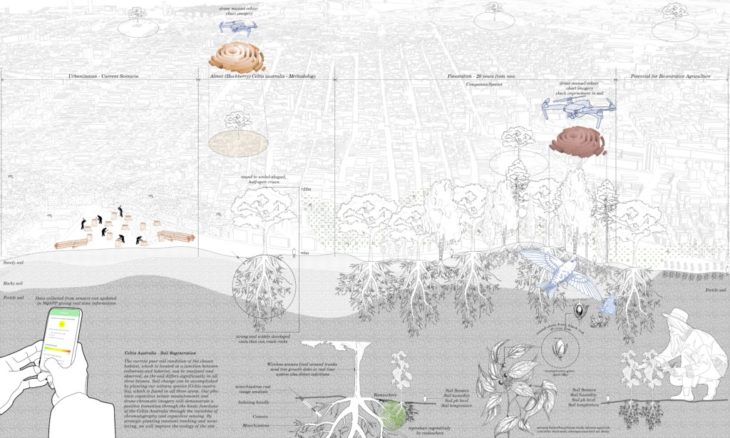 The tree roots penetrate deeper into the soil, loosening it and allowing it to regenerate to a better state. At this stage, optical and capacitive sensors are used to continuously monitor and track soil conditions. Once the soil has been regenerated to a fertile stage, we can use all of the variables of drone imagery and the Munsell color system to update real-time soil condition data via the sq app. The soil change information we receive from our witness species will assist us in inviting more biodiversity, reducing carbon content, and providing an opportunity for restorative agriculture in the given habitat.
The tree roots penetrate deeper into the soil, loosening it and allowing it to regenerate to a better state. At this stage, optical and capacitive sensors are used to continuously monitor and track soil conditions. Once the soil has been regenerated to a fertile stage, we can use all of the variables of drone imagery and the Munsell color system to update real-time soil condition data via the sq app. The soil change information we receive from our witness species will assist us in inviting more biodiversity, reducing carbon content, and providing an opportunity for restorative agriculture in the given habitat.
Celtis Australis – Soil Regeneration is a project of IAAC, Institute for Advanced Architecture of Catalonia developed at Master in Advanced Architecture in 2021 by Students: Pragati Patilkulkarni, Vishakha Pathak and faculty: Jonathan Minchin